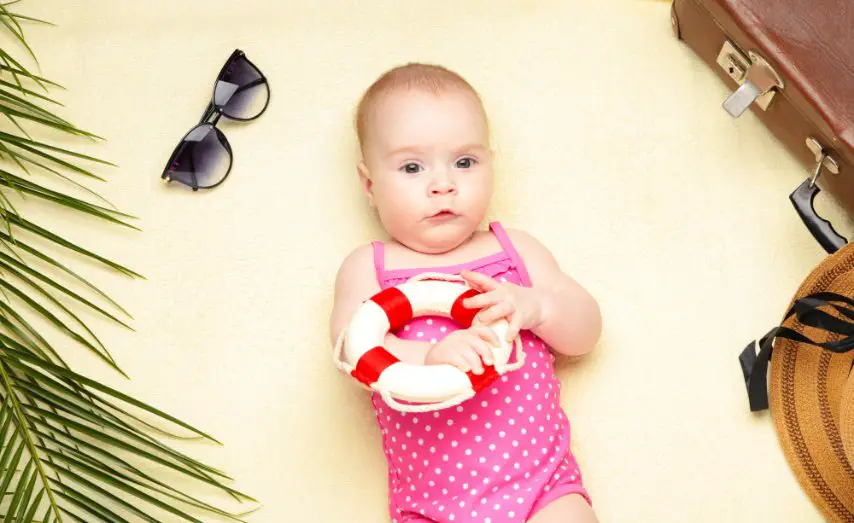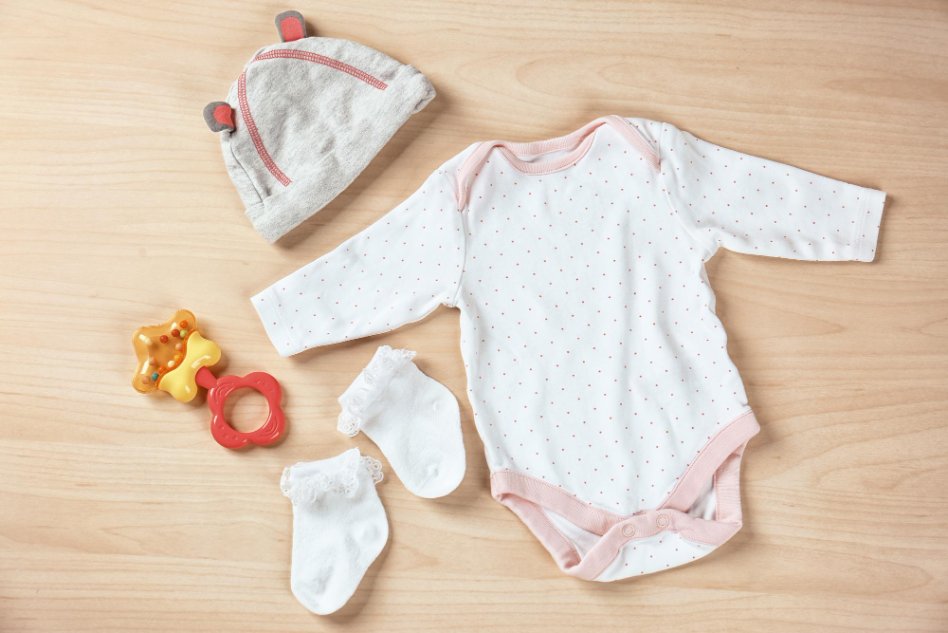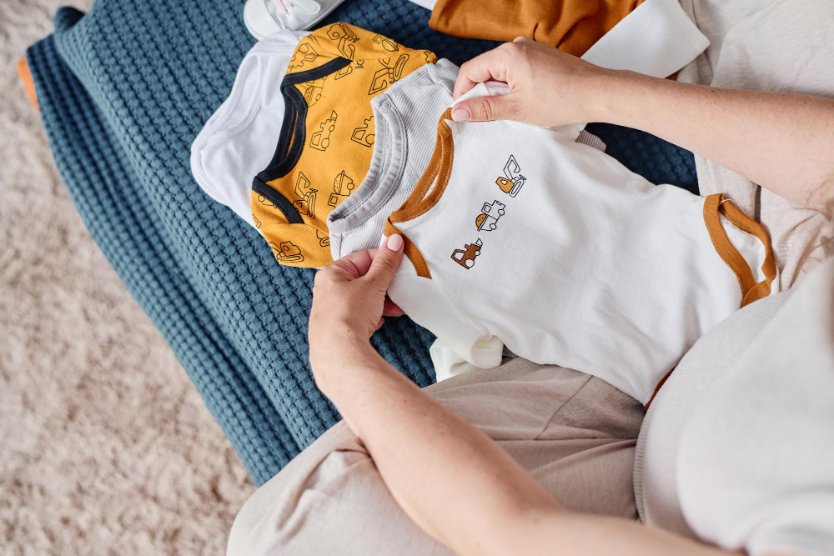Essential expert advice to keep your baby cool, comfortable, and safe during hot summer months
Table of Contents
Quick Safety Summary
Dress newborns in lightweight, breathable fabrics like cotton during summer. Use single layers when temperatures exceed 75°F (24°C), monitor for overheating signs, and prioritize shade over direct sun exposure. Always check your baby’s neck or chest temperature rather than hands or feet.
Quick Tools: Use our baby temperature converter to quickly convert between Fahrenheit and Celsius for optimal room temperatures.
Understanding Newborn Temperature Regulation in Heat
Newborns face unique challenges during summer months because their temperature regulation systems aren’t fully developed yet. Unlike adults who can efficiently sweat and adjust to heat, babies rely entirely on their environment and clothing choices to stay comfortable.
Why Newborns Struggle with Heat
Babies have a much higher surface area to body weight ratio than adults, meaning they gain and lose heat quickly. Their sweat glands aren’t fully functional, and they can’t move away from heat sources or remove clothing when uncomfortable. This makes them particularly vulnerable to overheating, which increases the risk of heat-related illness and even SIDS (Sudden Infant Death Syndrome).
Recognizing Overheating Signs
Parents should watch for these warning signs that indicate a baby may be too warm:
- Flushed, red face or skin
- Rapid or shallow breathing
- Hot, sweaty skin (especially on neck or chest)
- Restlessness or unusual fussiness
- Heat rash (small red bumps)
- Lethargy or decreased responsiveness
- Refusing to feed
Choosing the Right Fabrics for Summer
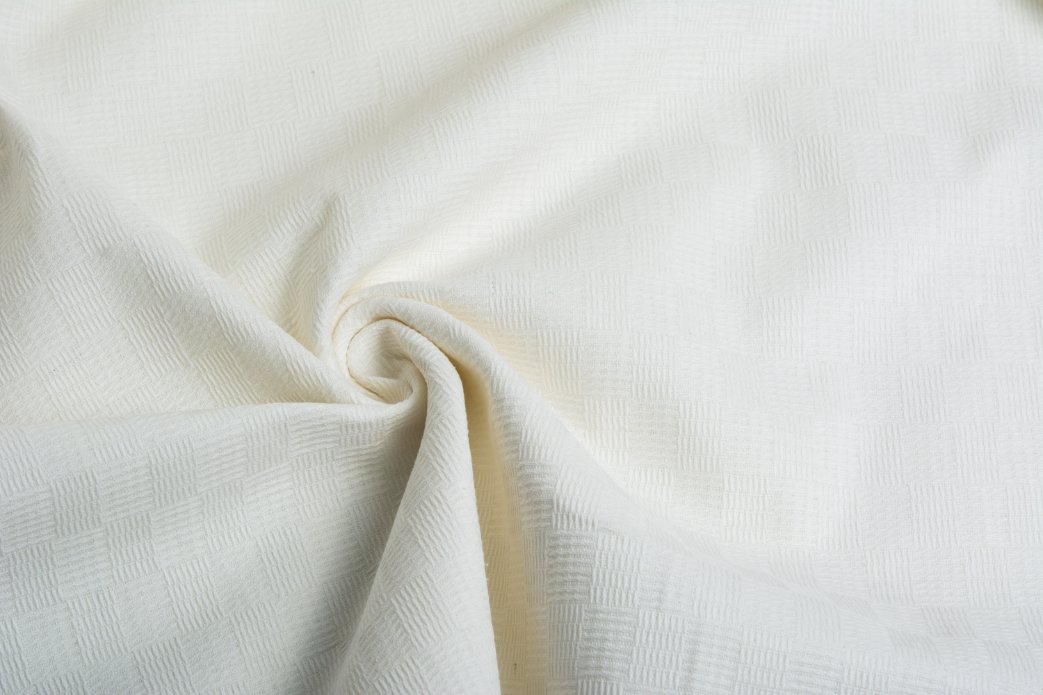
The fabric choice is the foundation of keeping your newborn comfortable in summer heat. Natural fabrics typically perform better than synthetic materials for temperature regulation.
Best Fabric Choices
Cotton: The Gold Standard
100% cotton remains the top choice for newborn summer clothing. It’s naturally breathable, absorbs moisture well, and allows air circulation around your baby’s skin. Look for lightweight cotton items specifically labeled as “summer weight” for optimal breathability.
Bamboo: Premium Comfort
Bamboo fabric offers exceptional benefits for summer wear:
- Superior moisture-wicking properties
- Natural temperature regulation
- Antibacterial properties
- Softer than cotton
- Natural UV protection
Muslin: Lightweight Champion
Muslin’s loose weave creates tiny air pockets that help regulate temperature. It’s particularly useful for swaddles and light blankets during summer months.
Fabric Comparison Chart
| Fabric | Breathability | Moisture Control | Best For |
|---|---|---|---|
| 100% Cotton | Excellent | Good | Daily wear, onesies |
| Bamboo | Excellent | Excellent | Sensitive skin, sleeping |
| Muslin | Excellent | Good | Swaddles, light layers |
| Linen | Excellent | Good | Special occasions |
| Polyester | Poor | Poor | Avoid in summer |
Fabrics to Avoid
Synthetic materials like polyester, nylon, and acrylic trap heat and don’t allow proper air circulation. These fabrics can cause your baby to overheat quickly and should be avoided during summer months.
Indoor Dressing Guidelines
Optimal Room Temperature
The ideal room temperature for newborns ranges between 68-72°F (20-22°C). This temperature range allows babies to maintain their natural body temperature without working too hard to stay warm or cool. If you need help converting between Fahrenheit and Celsius, our temperature converter tool provides instant conversions with safety guidelines.
Indoor Temperature Dressing Guide
| Room Temperature | Recommended Clothing | Additional Notes |
|---|---|---|
| 68-70°F (20-21°C) | Onesie + light pants or long-sleeve onesie | May need light swaddle |
| 71-75°F (21-24°C) | Short-sleeve onesie | Perfect comfort zone |
| 76-80°F (24-27°C) | Sleeveless onesie or just diaper | Monitor closely for overheating |
| Above 80°F (27°C) | Diaper only | Use fans, consider AC |
What to Dress a Newborn in 25 Degrees Summer (77°F)
At 25°C (77°F), dress your newborn in minimal clothing. A sleeveless cotton onesie or bodysuit is usually sufficient. If the room feels humid, consider just a diaper with a light muslin swaddle for comfort during sleep.
Air Conditioning and Fan Safety
When using air conditioning, avoid placing your baby directly in the airflow. For fan use, ensure it’s not blowing directly on your baby but rather circulating air around the room. Fans become less effective and potentially harmful when temperatures exceed 95°F (35°C).
Can I Leave the Fan On in Baby’s Room?
Yes, you can safely leave a fan on in your baby’s room, but follow these guidelines:
- Use oscillating fans rather than stationary ones
- Position the fan to circulate air around the room, not directly on the baby
- Ensure the fan is secure and out of reach
- Turn off fans when room temperature exceeds 95°F (35°C)
Is 26 Degrees Too Hot for a Baby Room?
26°C (79°F) is getting quite warm for a baby’s room. At this temperature, dress your baby in minimal clothing (sleeveless onesie or diaper only) and use fans or air conditioning to bring the temperature down to the ideal 68-72°F (20-22°C) range. Use our temperature conversion tool to easily convert between Celsius and Fahrenheit when monitoring room conditions.
Outdoor Safety and Sun Protection
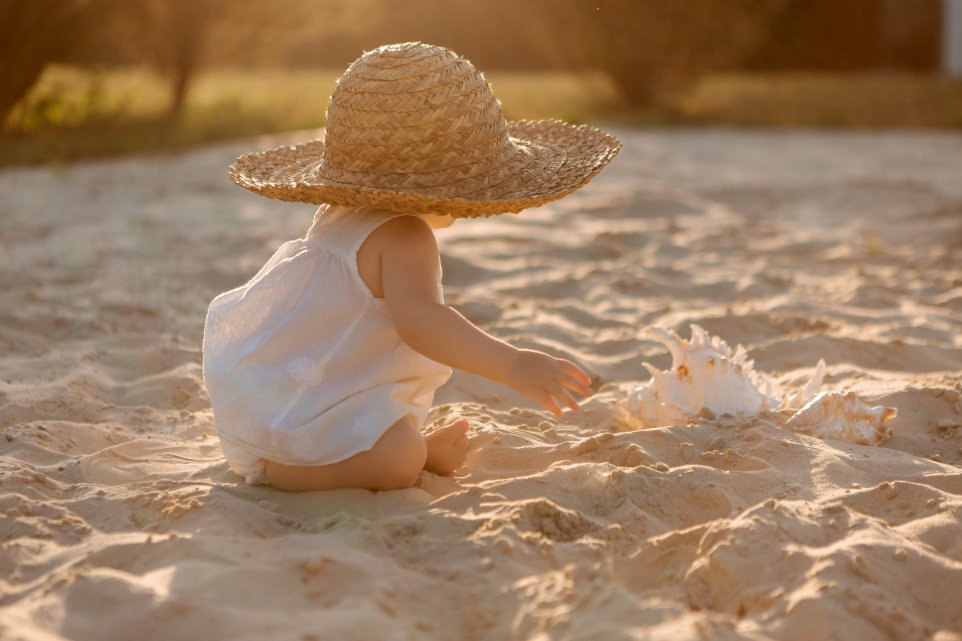
Safe Sun Exposure Guidelines
The American Academy of Pediatrics recommends keeping babies under 6 months out of direct sunlight. Their skin contains too little melanin to provide natural sun protection.
How Hot is Too Hot Outside for a Newborn?
When outdoor temperatures exceed 85°F (29°C), limit outdoor time and take frequent breaks in air-conditioned spaces. Above 90°F (32°C), outdoor activities should be avoided entirely during peak hours (10 AM to 4 PM).
What Weather is Too Hot for Newborns?
Consider these factors when determining if it’s too hot:
- Temperature: Above 85°F (29°C) requires extra precautions
- Humidity: High humidity makes it feel hotter and harder to cool down
- Heat Index: Check your weather app for “feels like” temperature
- UV Index: Higher UV levels increase burn risk
Creating Portable Shade
Essential shade solutions for outdoor activities:
- Stroller canopy with UV protection
- Portable umbrella with UV coating
- Pop-up tent designed for babies
- Muslin cloth for emergency shade (never cover stroller completely)
Before heading out, ensure you have all necessary items with our comprehensive hot weather outing checklist that covers everything from sun protection to emergency supplies.
Dressing for Outdoor Activities
When venturing outdoors in summer, protective clothing becomes essential:
- Lightweight, long-sleeved shirts for UV protection
- Wide-brimmed hat with neck protection
- Light-colored clothing to reflect heat
- Comfortable, breathable shoes or baby clothes that offer foot protection
Babywearing in Summer Heat
Many parents want to continue using baby carriers during summer months. With proper precautions, babywearing can be safe in hot weather.
Choosing Summer-Friendly Carriers
Look for carriers with these features:
- Mesh panels for breathability
- Minimal padding to reduce heat buildup
- Light-colored fabrics that reflect heat
- Moisture-wicking materials
- Quick-release buckles for emergency removal
Safe Babywearing Practices in Heat
Summer Babywearing Checklist
- ✓ Dress baby in minimal clothing (diaper and onesie only)
- ✓ Use a lightweight muslin between you and baby
- ✓ Take breaks every 15-20 minutes
- ✓ Carry a portable umbrella for shade
- ✓ Monitor baby’s temperature frequently
- ✓ Have backup stroller available
- ✓ Stay hydrated yourself
Warning Signs to Stop Babywearing
Immediately remove your baby from the carrier if you notice:
- Hot, sweaty skin
- Rapid breathing
- Flushed appearance
- Unusual fussiness or lethargy
- You feel overheated yourself
Heat Emergency Protocols
Recognizing Heat Emergencies
Heat emergencies in newborns can escalate quickly. Understanding the progression from mild overheating to serious heat illness is crucial.
Heat Emergency Response Flowchart
Immediate Cooling Techniques
If your baby shows signs of overheating:
- Remove from heat source immediately
- Undress to diaper only in air-conditioned space
- Apply cool (not cold) damp cloth to forehead and neck
- Offer extra feeding for hydration (breast milk or formula)
- Use fan to circulate air around baby
- Monitor temperature and breathing closely
- Baby’s temperature exceeds 100.4°F (38°C)
- Rapid or difficult breathing
- Vomiting or refusal to feed
- Extreme lethargy or unresponsiveness
- Seizures or unusual movements
Specific Summer Scenarios
Do Newborns Need to Wear Pants in the Summer?
In most summer situations, newborns don’t need pants. A onesie or bodysuit provides adequate coverage for indoor activities. For outdoor protection from sun and insects, lightweight summer fabrics in loose-fitting pants can be beneficial.
Do Newborns Need Pants Over Onesies?
Generally no, pants over onesies create unnecessary layers during summer. The exception is when you need extra sun protection or warmth in heavily air-conditioned spaces.
Do Newborns Need Socks in Summer?
Indoors during summer, socks are usually unnecessary and can contribute to overheating. Outdoors, lightweight cotton socks can protect feet from hot surfaces and sun exposure.
Do Newborns Need Hats in Summer?
Indoors, hats can trap heat and cause overheating. Outdoors, a wide-brimmed hat with UV protection is essential for shade and sun protection.
Hospital Discharge in Summer
How to Dress a Newborn Leaving the Hospital in Summer
For summer hospital discharge:
- Lightweight cotton onesie
- Comfortable receiving blanket for car seat
- Sun hat for outdoor transfer
- Extra lightweight outfit in case of temperature changes
- Remember: car seats require proper fitting, so avoid bulky clothing
Sleep Guidelines
Do Babies Wear Sleepsuits in Summer?
Summer sleepsuits should be lightweight cotton or bamboo. Many parents opt for just a onesie or sleep sack instead of full sleepsuits during hot weather.
What Temperature is Too Hot for a Baby to Sleep?
Room temperatures above 75°F (24°C) become uncomfortable for baby sleep. Anything above 80°F (27°C) requires immediate cooling measures.
Is 2.5 Tog Too Warm for Baby?
Yes, 2.5 tog is far too warm for summer. Summer sleep sacks should be 0.5-1.0 tog maximum. In very hot weather, just a diaper and light cotton onesie may be sufficient.
Keeping Young Babies Cool
How to Keep a 3 Week Old Baby Cool in Summer
For very young babies:
- Maintain room temperature between 68-72°F (20-22°C)
- Use minimal clothing (diaper and light onesie)
- Provide frequent feeds for hydration
- Use fans for air circulation (not direct airflow)
- Take cool baths if approved by pediatrician
- Monitor temperature every 30 minutes during hot spells
UPF Clothing and Sun Protection
Since sunscreen isn’t recommended for babies under 6 months, UPF (Ultraviolet Protection Factor) clothing becomes essential for sun protection.
Understanding UPF Ratings
UPF ratings indicate how much UV radiation penetrates fabric:
- UPF 15-24: Good protection (blocks 93.3-95.8% of UV)
- UPF 25-39: Very good protection (blocks 96.0-97.4% of UV)
- UPF 40-50+: Excellent protection (blocks 97.5-98%+ of UV)
Essential UPF Items for Newborns
- UPF 50+ long-sleeve onesies
- Wide-brimmed sun hats with neck protection
- Lightweight UPF leggings
- UV-protective blankets for stroller shade
- UPF swimwear for water activities
Shopping for UPF Clothing
When selecting girls’ summer dresses or any UPF clothing, look for:
- Skin Cancer Foundation Seal of Recommendation
- UPF rating of 30 or higher
- Tight weave fabrics
- Dark or bright colors (better protection than white)
- Comfortable fit that doesn’t restrict movement
Comprehensive Temperature Guidelines
Complete Temperature Dressing Chart
| Temperature Range | Indoor Clothing | Outdoor Clothing | Sleep Clothing | Precautions |
|---|---|---|---|---|
| 68-72°F (20-22°C) | Long-sleeve onesie | Onesie + light cardigan + hat | Sleep sack (1.0 tog) | Perfect temperature |
| 73-77°F (23-25°C) | Short-sleeve onesie | UPF shirt + hat + shade | Light onesie or 0.5 tog sack | Monitor hydration |
| 78-82°F (26-28°C) | Sleeveless onesie | Minimal clothing + maximum shade | Diaper only | Frequent temperature checks |
| 83-87°F (28-31°C) | Diaper only | Limit outdoor time | Diaper only + fan | Use AC, increase feeds |
| 88°F+ (31°C+) | Diaper only + AC | Avoid outdoors | Diaper only + cooling measures | Emergency cooling protocols |
Heat Index Considerations
The heat index combines temperature and humidity to show how hot it actually feels. Use these guidelines:
- 80-89°F heat index: Caution – monitor for heat exhaustion
- 90-104°F heat index: Extreme caution – limit outdoor exposure
- 105°F+ heat index: Danger – avoid all outdoor activities
Behavioral Signs by Temperature
How to Tell if Baby is Too Hot
| Temperature Status | Physical Signs | Behavioral Signs | Action Needed |
|---|---|---|---|
| Comfortable | Normal skin color, dry | Content, feeding well | Continue current care |
| Getting Warm | Slightly flushed, warm to touch | Mild fussiness | Remove one layer |
| Too Hot | Red face, sweating, hot skin | Crying, restless | Cool immediately |
| Overheating | Very hot, rapid breathing | Lethargy or extreme fussiness | Emergency cooling |
Will Baby Cry if Too Hot?
Yes, babies typically cry when they’re too hot, but this isn’t always reliable. Some babies become lethargic when overheated rather than fussy. Always rely on physical signs like temperature and skin color rather than just crying patterns.
Do Newborns Sweat When Hot?
Newborns have immature sweat glands and may not sweat visibly even when overheated. Look for dampness on the neck, chest, or back, but don’t rely solely on sweating as an indicator of temperature.
Summer Sleep Safety Guidelines
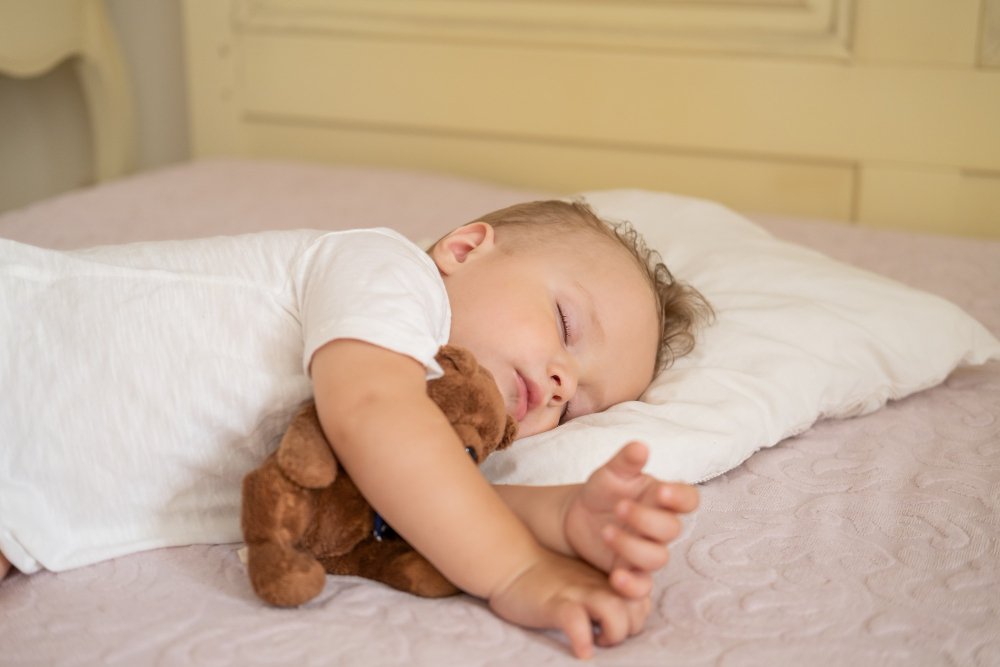
Safe Sleep Temperatures
Maintaining proper sleep temperature is crucial for both comfort and SIDS prevention. The ideal sleep environment should be between 68-70°F (20-21°C).
TOG Ratings for Summer
TOG measures the thermal resistance of sleep products:
- 0.5 TOG: Very hot weather (above 75°F/24°C)
- 1.0 TOG: Warm weather (70-75°F/21-24°C)
- Cellular blankets: Typically 1-2 TOG depending on weave
How Many Tog is a Cellular Blanket?
Standard cellular blankets range from 1-2 TOG. For summer use, choose the lightest cellular blankets available or opt for muslin alternatives that provide even less insulation.
Safe Sleep Setup for Summer
Summer Sleep Safety Checklist
- ✓ Room temperature 68-70°F (20-21°C)
- ✓ Light cotton onesie or diaper only
- ✓ 0.5-1.0 TOG sleep sack maximum
- ✓ Firm mattress with fitted sheet only
- ✓ No loose blankets in crib
- ✓ Fan for air circulation (not direct airflow)
- ✓ Room thermometer for monitoring
Hydration and Feeding in Hot Weather
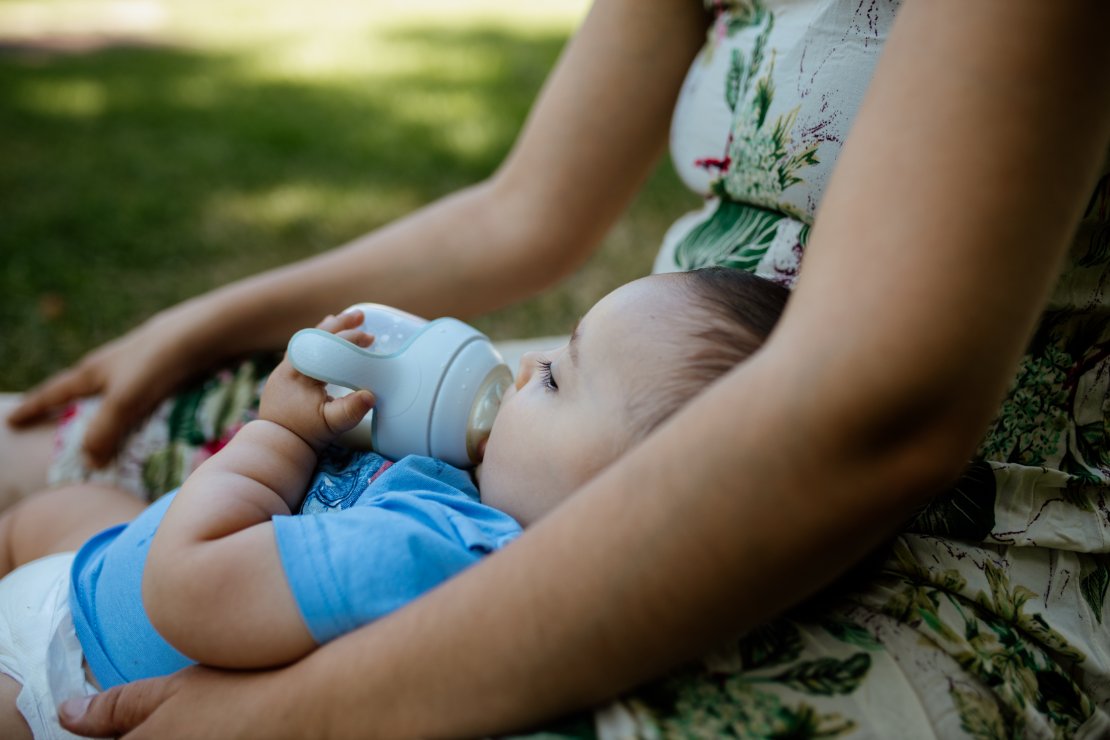
Breastfeeding in Summer
Breast milk provides all the hydration newborns need, even in hot weather. However, babies may need to feed more frequently during heat waves.
Formula Feeding Adjustments
Formula-fed babies may need slightly more frequent feeds during very hot weather, but never give plain water to babies under 6 months without pediatrician approval.
Signs of Proper Hydration
- 6-8 wet diapers per day
- Normal urine color (pale yellow)
- Moist mouth and lips
- Tears when crying
- Normal skin elasticity
Travel and Car Safety in Summer
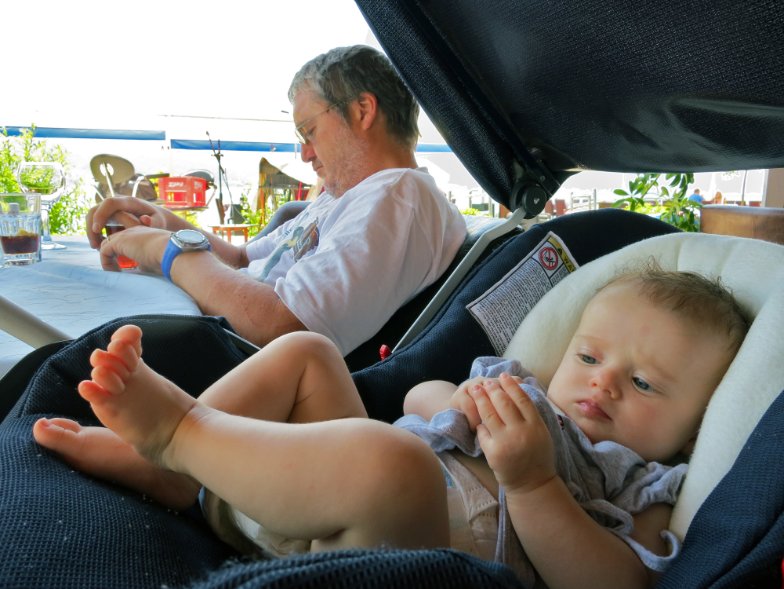
Car Seat Safety in Heat
Car interiors can reach dangerous temperatures quickly. Never leave a baby unattended in a vehicle, even for a few minutes.
Pre-Cooling Strategies
- Start car and run AC 5-10 minutes before loading baby
- Use sunshades on all windows
- Check car seat temperature before placing baby
- Cover car seat with light towel when parked
Travel Clothing
For summer travel with newborns:
- Lightweight onesie for car seat safety
- Extra clothing for temperature changes
- Portable fan for stroller
- Sun hat for outdoor transfers
- Muslin blanket for versatile use
Don’t forget to pack systematically using our detailed summer outing checklist to ensure you have everything needed for safe travel with your newborn.
Essential Summer Products for Newborns
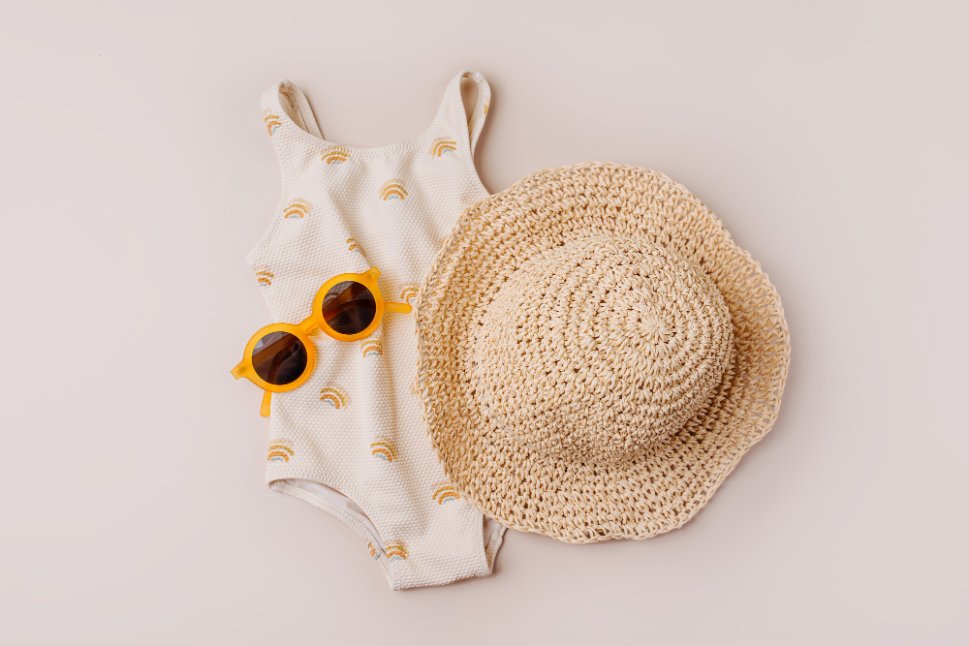
Clothing Essentials
- Cotton onesies: 6-8 short sleeve, 3-4 sleeveless
- Muslin swaddles: 4-6 for versatile use
- UPF clothing: 2-3 pieces for outdoor protection
- Sun hats: Wide-brimmed with chin strap
- Light sleep sacks: 0.5-1.0 TOG rating
Cooling Accessories
- Room thermometer with humidity gauge
- Portable battery-operated fan
- UV-protective stroller canopy
- Cooling towels for emergencies
- Insulated bottle carriers for feeds
Safety Equipment
- Digital thermometer for quick temperature checks
- First aid kit with cooling supplies
- Portable shade tent
- UV meter for measuring sun intensity
Expert Medical Recommendations
American Academy of Pediatrics Guidelines
The AAP emphasizes that proper temperature regulation is critical for newborn safety. They recommend the “one extra layer” rule as a starting point, but stress that parents should adjust based on environmental conditions and individual baby needs.
Pediatric Emergency Medicine Insights
Emergency medicine specialists note that heat-related illnesses in infants spike during July and August. Early recognition and immediate cooling are crucial for preventing serious complications.
When to Consult Your Pediatrician
Contact your baby’s doctor immediately if:
- Temperature exceeds 100.4°F (38°C) rectally
- Signs of dehydration persist after cooling measures
- Unusual lethargy or irritability
- Feeding refusal for more than 4 hours
- Any breathing difficulties
- Heat rash that doesn’t improve with cooling
Frequently Asked Questions
Yes, lightweight cotton onesies are perfect for summer. Choose short-sleeve or sleeveless styles depending on temperature. Onesies provide necessary coverage while allowing heat to escape.
For summer sleep, dress your newborn in a lightweight cotton onesie or just a diaper if the room temperature exceeds 75°F (24°C). Use a 0.5 TOG sleep sack maximum, or skip it entirely in very hot conditions.
Check the back of your baby’s neck or chest – if it feels hot or sweaty, they’re too warm. Other signs include flushed skin, rapid breathing, restlessness, and heat rash. Remove layers immediately if you notice these signs.
No, hats indoors can cause overheating during summer. Only use hats outdoors for sun protection. Choose wide-brimmed styles with UPF protection for outdoor activities.
Maintain room temperature between 68-72°F (20-22°C) year-round. This range allows newborns to regulate their body temperature effectively without overheating or getting too cold. For easy temperature conversions, try our baby temperature converter.
Yes, fans are safe when used properly. Use oscillating fans that circulate air around the room rather than blowing directly on the baby. Turn off fans when outdoor temperatures exceed 95°F (35°C).
During heat waves or when room temperature exceeds 75°F (24°C), check your baby every 30 minutes by feeling their neck or chest. Look for signs of overheating and adjust clothing accordingly.
Avoid outdoor activities when temperatures exceed 85°F (29°C), especially during peak hours (10 AM – 4 PM). If you must go out, use maximum shade protection and limit exposure time to 15-20 minutes. Before any summer outing, use our comprehensive packing checklist to ensure you’re fully prepared.
Move to a cool area immediately, remove excess clothing, apply cool (not cold) damp cloths to neck and forehead, offer extra feeding, and use a fan for air circulation. Call your pediatrician if symptoms don’t improve within 30 minutes.
Avoid synthetic fabrics like polyester, nylon, and acrylic as they trap heat and don’t breathe well. Stick to natural fibers like cotton, bamboo, and muslin that allow air circulation and moisture wicking.
Transitioning Between Seasons
Transitioning Between Seasons
As summer transitions to fall, temperature fluctuations become more common. Keep a variety of clothing options available and check weather forecasts regularly. Our seasonal clothing timeline planner helps you prepare for changing weather patterns and ensure your baby stays comfortable year-round.
Building a Seasonal Wardrobe
For comprehensive guidance on seasonal clothing needs, explore our guide to seasonal wardrobes for infants. This resource helps parents plan clothing needs throughout the year.
Fabric Care for Longevity
Proper care of summer clothing extends its life for future use. Learn about cotton care and caring for different fabric types to maintain clothing quality.
Conclusion
Keeping your newborn safe and comfortable during summer heat requires careful attention to clothing choices, environmental factors, and warning signs of overheating. The key principles center around choosing breathable natural fabrics, maintaining proper room temperatures, and monitoring your baby’s comfort levels consistently.
Essential Takeaways for Summer Newborn Care
- Fabric choice matters: Always opt for lightweight, breathable natural fabrics like cotton and bamboo over synthetic materials
- Temperature monitoring is crucial: Check your baby’s neck or chest regularly – hands and feet aren’t reliable indicators
- Less is often more: When in doubt, err on the side of fewer layers rather than more
- Shade over sun: Keep babies under 6 months out of direct sunlight entirely
- Emergency preparedness: Know the signs of overheating and have a cooling plan ready
- Professional guidance: Don’t hesitate to contact your pediatrician with temperature-related concerns
Final Recommendations
Summer months can be enjoyable for the whole family when proper precautions are taken. Remember that every baby is different, so while these guidelines provide a solid foundation, always trust your instincts as a parent. Your baby’s individual needs may vary based on their size, health status, and personal comfort preferences.
Invest in quality, breathable clothing that will keep your baby comfortable while providing necessary protection from heat and sun. Consider UPF-rated clothing as a valuable investment for outdoor activities, and always prioritize safety over fashion when making clothing choices.
Most importantly, stay vigilant during hot weather periods. Heat-related illnesses can develop quickly in newborns, but they’re entirely preventable with proper care and attention. By following these evidence-based guidelines and maintaining open communication with your healthcare provider, you can ensure your baby stays safe, comfortable, and happy throughout the summer months.
For ongoing support with infant clothing choices and care, explore our comprehensive resources on newborn and infant clothing. Don’t forget to bookmark our helpful tools: the temperature converter for quick conversions, the summer outing checklist for safe outdoor adventures, and the seasonal clothing planner for year-round preparation. Remember that proper preparation and knowledge are your best tools for keeping your little one safe during the warmest months of the year.

